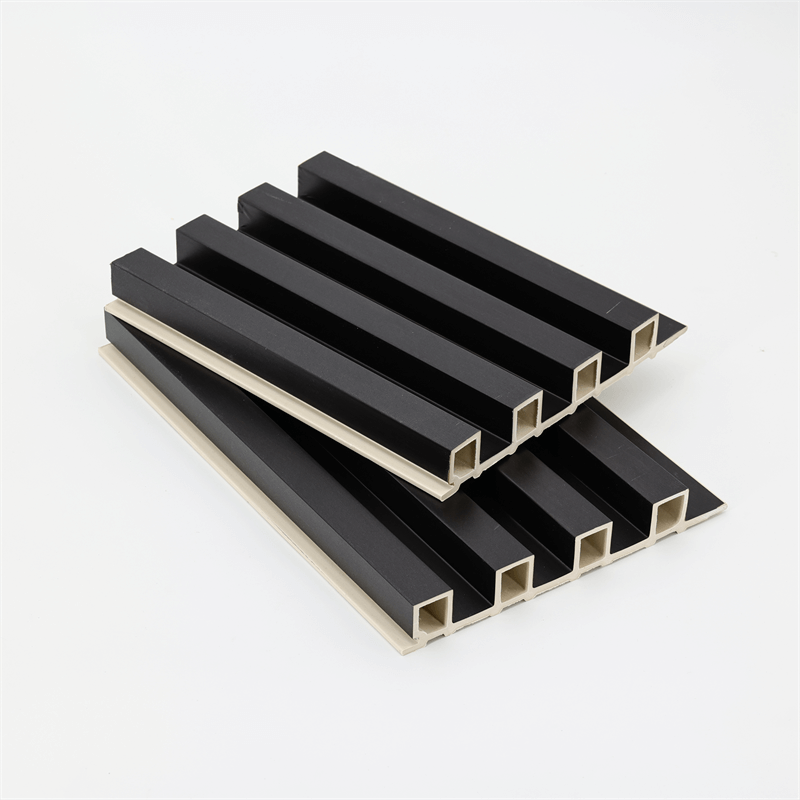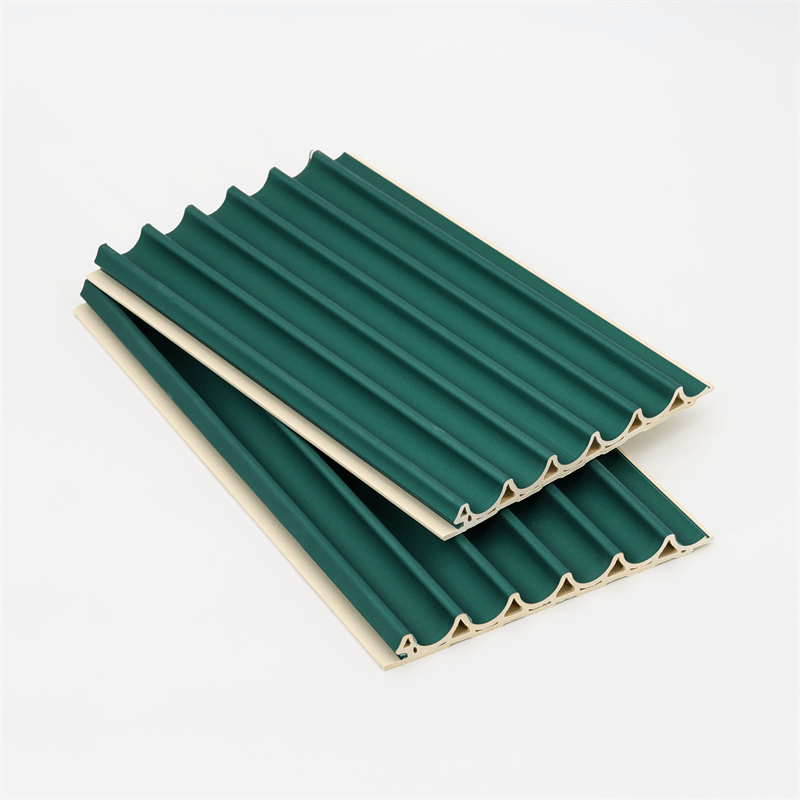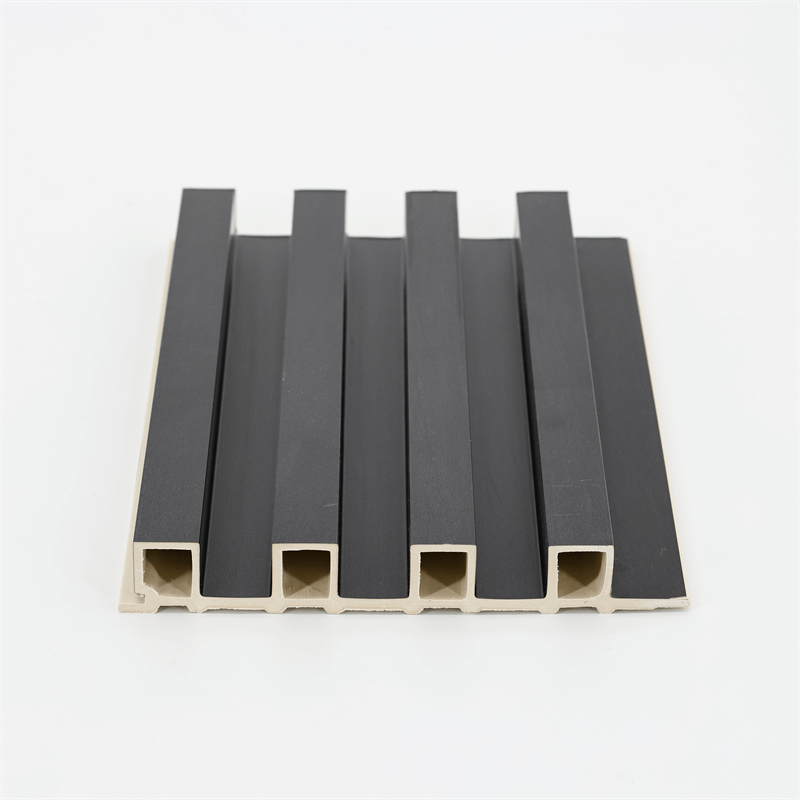In the face of environmental challenges and the need for sustainable practices, the construction industry has been seeking innovative solutions to reduce its ecological footprint.
One such solution is the use of WPC (Wood-Plastic Composite) wall panels, which offer numerous advantages in terms of sustainability.
This essay explores how WPC wall panels contribute to sustainable construction practices, focusing on their eco-friendly composition, resource efficiency, energy-saving properties, and their role in reducing waste.
I. Eco-Friendly Composition
WPC wall panels are composed of a blend of recycled wood fibers and plastic materials, making them an eco-friendly alternative to traditional construction materials.
Utilizing Recycled Materials: The wood fibers used in WPC panels are often sourced from post-industrial or post-consumer wood waste, such as sawdust or wood chips.
By repurposing these materials, WPC panels help reduce the demand for virgin timber, minimizing deforestation and preserving natural resources.
Plastic Waste Diversion: The plastic component of WPC panels is typically sourced from recycled plastics, including post-consumer plastic bottles or packaging materials.
By incorporating these plastics into the manufacturing process, WPC panels contribute to the reduction of plastic waste in landfills, alleviating the environmental impact associated with plastic pollution.
II. Resource Efficiency
WPC wall panels promote resource efficiency by utilizing recycled materials and minimizing resource consumption throughout their lifecycle.
Reduced Timber Consumption: By substituting traditional timber with WPC panels, the demand for virgin wood resources is significantly reduced.
This helps conserve forests and protect valuable ecosystems, contributing to biodiversity preservation and mitigating the impacts of deforestation.
Waste Utilization: WPC panels provide a solution for utilizing wood waste that would otherwise end up in landfills or be incinerated.
By repurposing these waste materials into durable building products, WPC panels contribute to a more circular economy, where resources are maximized and waste is minimized.
III. Energy-Saving Properties
WPC wall panels offer energy-saving properties that contribute to sustainable construction practices and reduce energy consumption.
Thermal Insulation: WPC panels have excellent thermal insulation properties, reducing heat transfer through walls.
This results in improved energy efficiency and reduced reliance on heating or cooling systems, leading to lower energy consumption and reduced carbon emissions.
Cool Roof Effect: Some WPC panels are designed to have light-reflective properties, similar to cool roofs.
This feature helps reduce the absorption of solar heat, particularly in hot climates, resulting in lower cooling requirements and energy savings.
IV. Waste Reduction
WPC wall panels play a significant role in waste reduction throughout the construction process and the lifecycle of a building.
Construction Waste Reduction: WPC panels are prefabricated and can be easily installed, minimizing on-site waste generation during construction.
Additionally, their durability and resistance to damage reduce the need for frequent replacements, further reducing construction waste.
Longevity and Durability: WPC panels have a long lifespan and require minimal maintenance, reducing the need for replacements and repairs.
This results in a significant reduction in waste generation over the lifetime of a building, contributing to sustainable waste management practices.
WPC wall panels offer a sustainable solution for construction practices, addressing environmental concerns and promoting resource efficiency.
Their eco-friendly composition, utilization of recycled materials, energy-saving properties, and waste reduction benefits make them a viable choice for sustainable construction projects.
By opting for WPC wall panels, architects, builders, and homeowners can contribute to the preservation of natural resources, reduction of plastic waste, energy efficiency, and waste reduction.
As the demand for sustainable construction practices continues to grow, WPC wall panels are poised to play an increasingly important role in the transition towards greener and more responsible building practices.
By embracing these sustainable solutions, the construction industry can pave the way for a more sustainable future, where buildings are not only functional and aesthetically pleasing but also environmentally conscious and resilient.
Furthermore, the use of WPC wall panels in sustainable construction practices extends beyond their environmental benefits.
These panels also offer practical advantages that enhance the overall building performance and occupant comfort.
One notable advantage is the excellent sound insulation provided by WPC wall panels.
The dense composition of the panels helps to reduce noise transmission, creating quieter indoor environments.
This is particularly beneficial in buildings located in noisy urban areas or near transportation hubs, where external noise can be a significant issue.
By minimizing noise disturbances, WPC wall panels contribute to creating healthier and more peaceful living and working spaces.
Additionally, WPC wall panels are highly durable and resistant to wear and tear. Their composition makes them resistant to rotting, warping, or cracking, even in high-moisture environments.
This durability ensures that the panels maintain their structural integrity over time, reducing the need for frequent replacements or repairs.
As a result, WPC panels contribute to the longevity of buildings, reducing waste generation and the associated environmental impact.
Furthermore, the versatility of WPC wall panels allows for a wide range of design possibilities, making them suitable for various architectural styles and aesthetic preferences.
The panels can be customized in terms of size, color, and texture, offering designers the flexibility to create unique and visually appealing spaces.

Whether used in residential, commercial, or public buildings, WPC panels can add a touch of elegance, warmth, or modernity, depending on the design intent.
In terms of installation, WPC wall panels offer ease and efficiency. They are lightweight and can be easily cut or shaped to fit specific wall dimensions, allowing for quick and hassle-free installation.
This reduces construction time and labor costs, contributing to overall project efficiency and cost-effectiveness.
Additionally, the panels can be easily removed and reused if needed, further promoting sustainable construction practices.
Moreover, WPC wall panels are also compatible with other sustainable building systems and technologies.
They can be seamlessly integrated with energy-efficient insulation materials, renewable energy systems, or smart building technologies, enhancing the overall energy performance of the building.
This integration creates synergies that optimize the building’s sustainability and contribute to reducing its carbon footprint.
In conclusion, WPC wall panels offer numerous advantages for sustainable construction practices.
Their eco-friendly composition, resource efficiency, energy-saving properties, waste reduction benefits, durability, and design versatility make them a compelling choice for architects, builders, and homeowners committed to sustainable building practices.
By incorporating WPC panels into construction projects, the industry can contribute to reducing environmental impact, promoting resource efficiency, and creating buildings that are not only visually appealing but also functional, comfortable, and resilient.
As sustainable construction continues to gain importance, WPC wall panels provide a solution that aligns with the principles of sustainability and sets a path towards a greener and more sustainable built environment.


